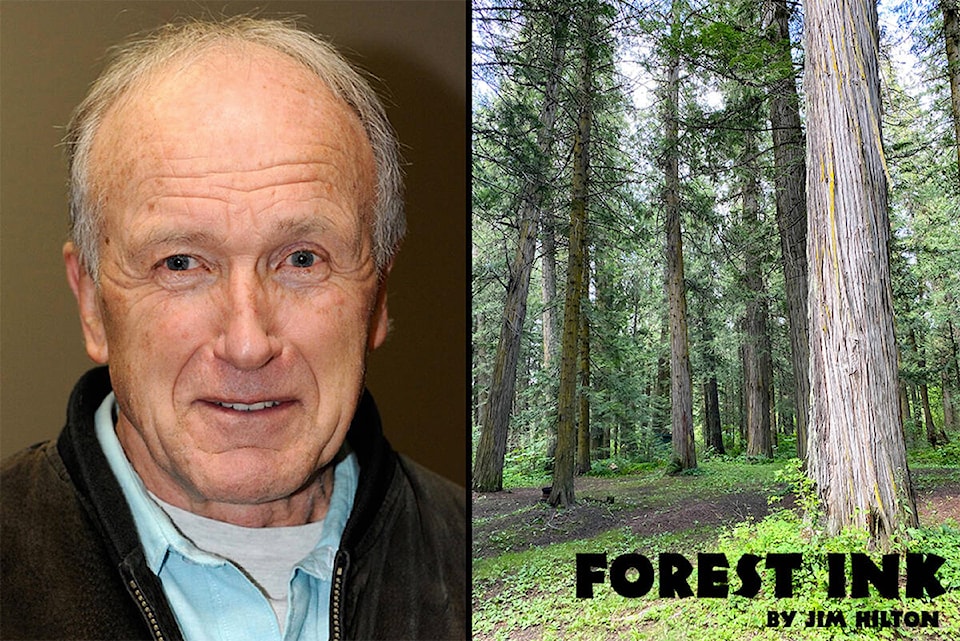The wildfires of 2017 no doubt had a major influence on a wide variety of animals. In our neighbourhood it was with the black bears which had normally been a concern in the fall when we had to make sure we picked our fruit trees before the middle of August.
At least four bears were seen in our area following our return from the evacuation. Unfortunately for me the new bears discovered some containers of used canola oil that I collect from some restaurants. After filtering the oil I was storing it the plastic containers that it comes in and then using it in my diesel truck along with regular diesel. I soon realized that hungry displaced bears also find the used oil a tasty treat so I had to move it into metal containers for long-term storage.
Since we have a large deer population in our area it was more difficult to see what impact the wildfires may have had on them. My assumption was that they would have been displaced for some time since most of their food source would have been destroyed by the fire. To my surprise this did not seem to be the case based on a deer study done south of the border.
As described in a CBC radio interview a team studying deer in California with automatic cameras and GPS collars had their project interrupted when a massive wildfire. In 2018 the Mendocino fire burned through half of their study area providing a good opportunity to compare the deer habits in the burned area compared to the unburned portion.
The researchers predicted that deer would be displaced by the disturbance or experience high mortality post-fire if they stayed in the burn area. They used data from GPS collars on 18 individual deer to quantify patterns of home range use, movement, and habitat selection before and after the fire.
The changes in body condition were monitored using images from trail cameras on a grid. Despite a dramatic reduction in vegetation in burned areas, deer showed high site fidelity to pre-fire home ranges, returning within hours of the fire. As expected the home range size doubled after the fire and corresponded to increased daily activity in a severely resource-depleted environment.
Within their home ranges, the study noted, deer also selected strongly for patches of surviving vegetation and woodland habitat, as these areas provided forage and cover in an otherwise desolate landscape. Deer body condition significantly decreased after the fire, likely as a result of a reduction in forage within their home ranges, but all collared deer survived for the duration of the study.
As the authors point out, high site fidelity for deer (in this case black tailed deer) is likely an under-reported risk factor in the face of extreme events and variability under climate change. While this study was interesting it may take some time to see how these results can be applied to the large wildfires in B.C. especially during our winter season when mature forests are very critical. It is still important to look at any research that may help predict how our plant and animals have been impacted by past and future natural events.
Jim Hilton is a professional agrologist and forester who has lived and worked in the Cariboo Chilcotin for the past 40 years. Now retired, Hilton still volunteers his skills with local community forests organizations.
newsroom@clearwatertimes.com
Like us on Facebook and follow us on Twitter
